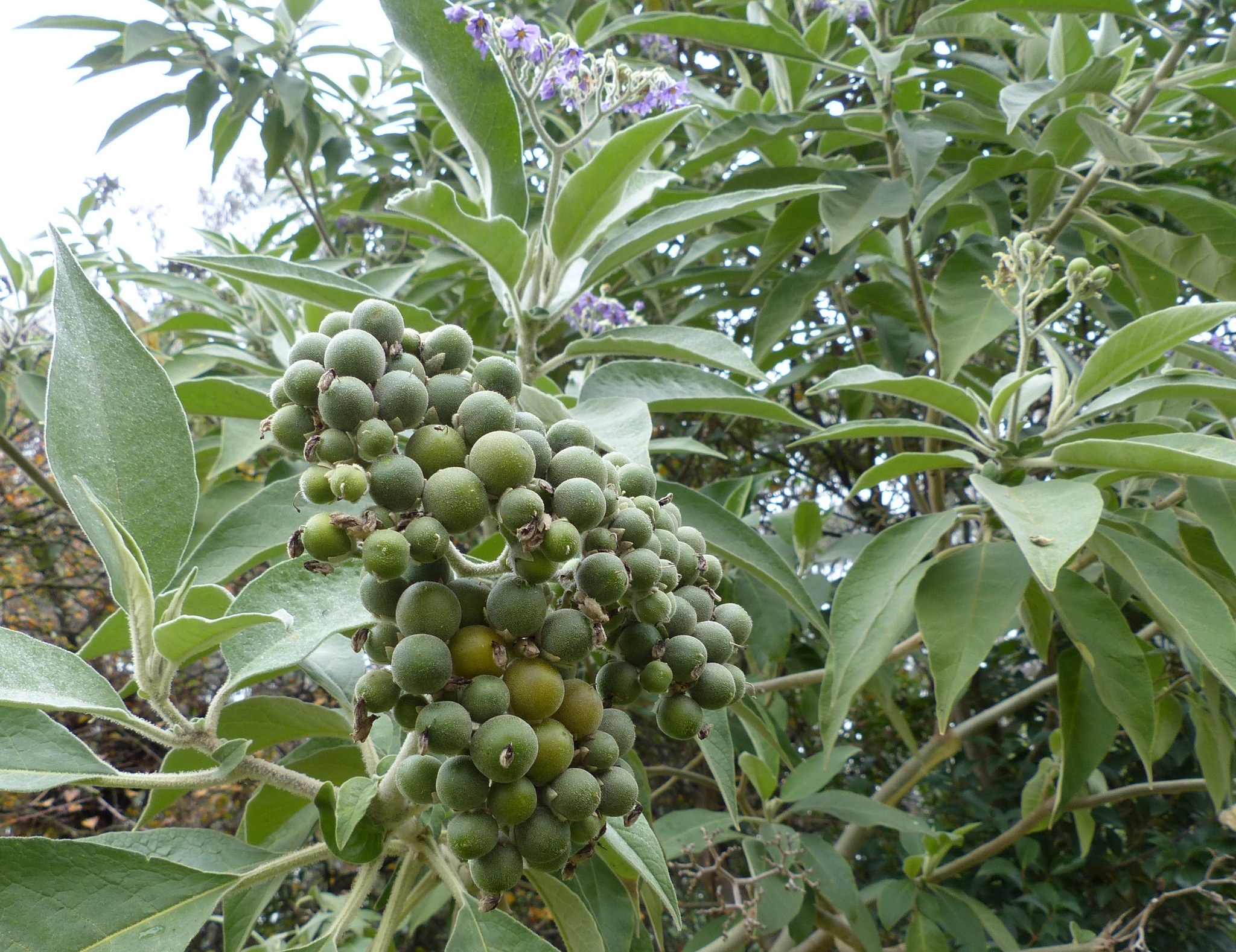
Mostly annual, biennial or perennial herbs and vines, occasionally trees and shrubs, often with prickles and/or branched hairs. Leaves mostly alternate, simple, lobed, pinnate or trifoliate; stipules absent. Flowers mostly bisexual, insect-pollinated, regular, solitary or in cymose clusters. Sepals usually 5, united, often persistent and enlarging in fruit. Petals 5 (rarely 4 or 6), united, appearance ranging from wheel-like to tubular, the lobes often pleated, sometimes irregular and 2-lipped. Stamens mostly 5, usually alternating with the petals and attached to the tube, the anthers sometimes converging. Ovary superior, of 2(-5) fused carpels, mostly 2-chambered and with axile placentation. Fruit a berry, drupe or dehiscent capsule containing numerous seeds.
Regarded as closely related to the Scrophulariaceae but with different anatomy and gynoecium. Many species contain alkaloids - chemicals that have medicinal, hallucinogenic or poisonous properties: several have been used as sources of pharmaceutical drugs. Rarely cultivated plants include: Anthocercis viscosa R. Br., Sticky Ray Flower, from WA, a sticky shrub with fragrant, white, star-like flowers; Duboisia leichhardtii (F. Muell.) F.Muell., Corkwood, from southern Queensland, cultivated as a hybrid in warmer climates for hyoscine, an alkaloid used in medicinal drugs, and probably toxic to both stock and humans; Fabiana imbricata Ruiz & Pav., an ornamental sticky shrub from Chile; and Hyoscyamus niger L., Henbane, from temperate Eurasia, occasionally offered in herb nurseries and naturalised in scattered localities in South Australia, New South Wales and Victoria. Lycium is a genus of spiny shrubs formerly cultivated. Two species have naturalised and become environmental pests: the South African L. ferocissimum Miers, African Boxthorn, which occurs in all states and has become a noxious weed in New South Wales and much of Victoria; and Chinese Boxthorn, L. barbarum L. which occurs in mostly coastal South Australia, Queensland, New South Wales, Victoria and Tasmania. Vestia foetida Hoffmanns. from Chile is occasionally offered; it is a Cestrum-like shrub with yellow-green flowers and badsmelling leaves. [V. lycioides Willd.]
Many plants are edible and economically important, including: Capsicum, Capsicum, Chilli, Peppers; Lycopersicon esculentum, Tomato; Physalis, Cape Gooseberry; and Solanum, Eggplant, Potato, Tamarillo. Plants with medicinal or hallucinogenic alkaloids include: Atropa belladonna, Deadly Nightshade; Brugmansia, Angel's Trumpet; Brunfelsia; Datura, Thornapple; Duboisia; Hyoscyamus niger, Black Henbane; Mandragora, Mandrake; Nicotiana, Tobacco; and Solandra, Chalice Vine.
Mostly 5 stamens attached to the petals; ovary of 2 carpels with axile placentation maturing to form a berry or capsule.
About 90 genera and 2600 species, near cosmopolitan but with a centre of distribution in C and S America. Australia has 23 genera with about 200 species (see Flora of Australia, Vol. 29).
Hawkes et al. (1979), Purdie et al. (1982), D'Arcy (1986), Hawkes et al. (1991).
Source: (2002). Solanaceae. In: . Horticultural Flora of South-eastern Australia. Volume 4. Flowering plants. Dicotyledons. Part 3. The identification of garden and cultivated plants. University of New South Wales Press.
